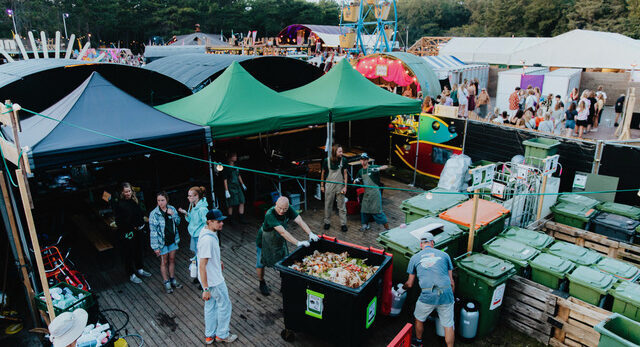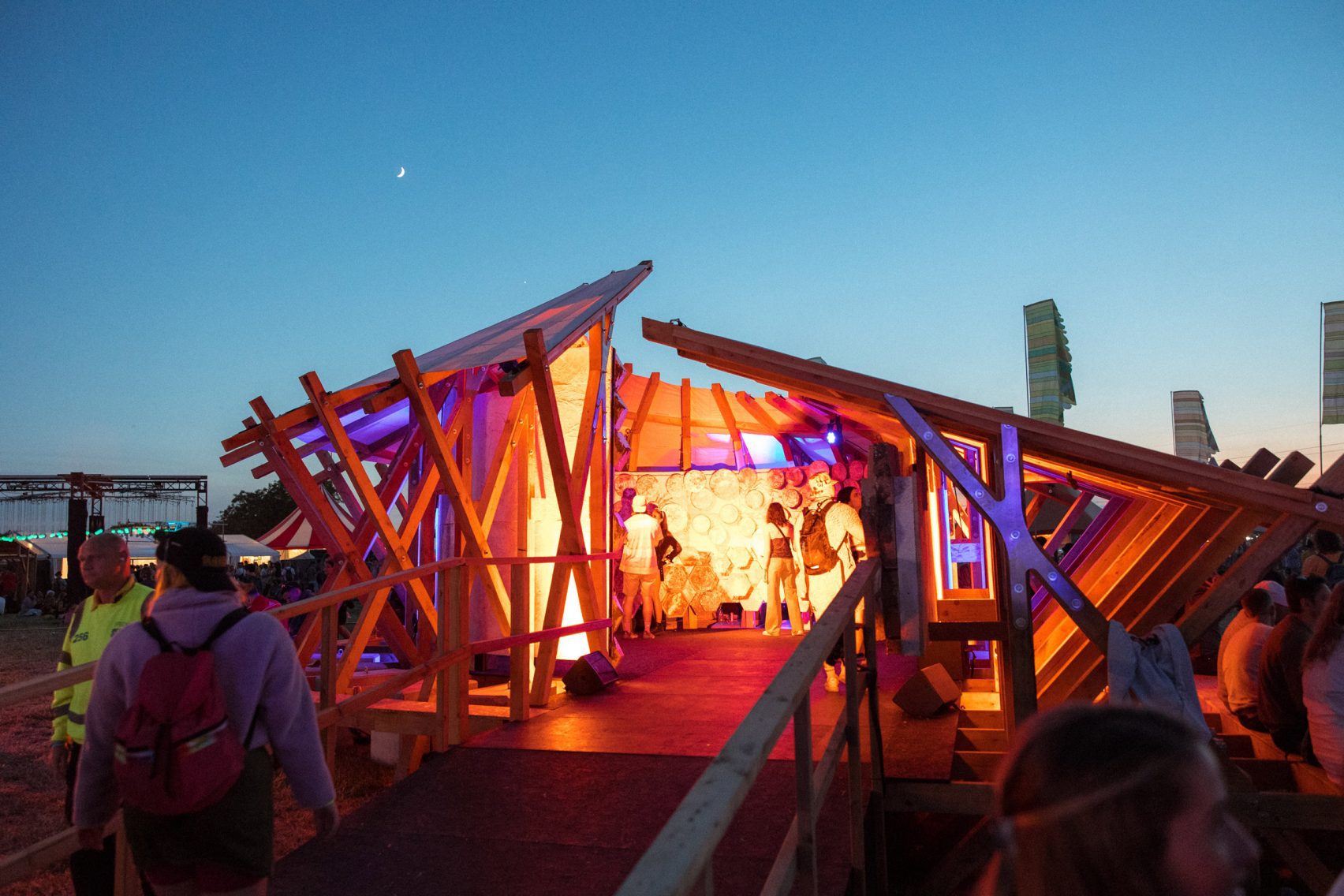
Glastonbury’s mushroom mycelium pavilion explores sustainable stage design
This article was written by Jennifer Hahn over at De Zeen, and can be found here.
Festival set designer Simon Carroll has created the spiralling Hayes Pavilion from salvaged timber and mycelium at Glastonbury festival to challenge the industry’s over-reliance on polystyrene foam.
Encircled by a long bench, the Hayes Pavilion was designed as both a gathering space and a conversation piece, exploring whether mycelium can be used as a more sustainable material for building the elaborate sets found at festivals like Glastonbury.

The structure in the Silver Hayes field consists of a 26-metre-long timber frame, shaped roughly like the number six with one long wall clad in mycelium – a biomaterial grown from the root structure of fungi that is increasingly being explored as a natural insulator and fire retardant.
To form the wall, mycelium insulation boards created by manufacturers Biohm and Grown were cut up and combined in much the same way that set designers in the film and music industry will carve elaborate sets out of cheap polystyrene panels.
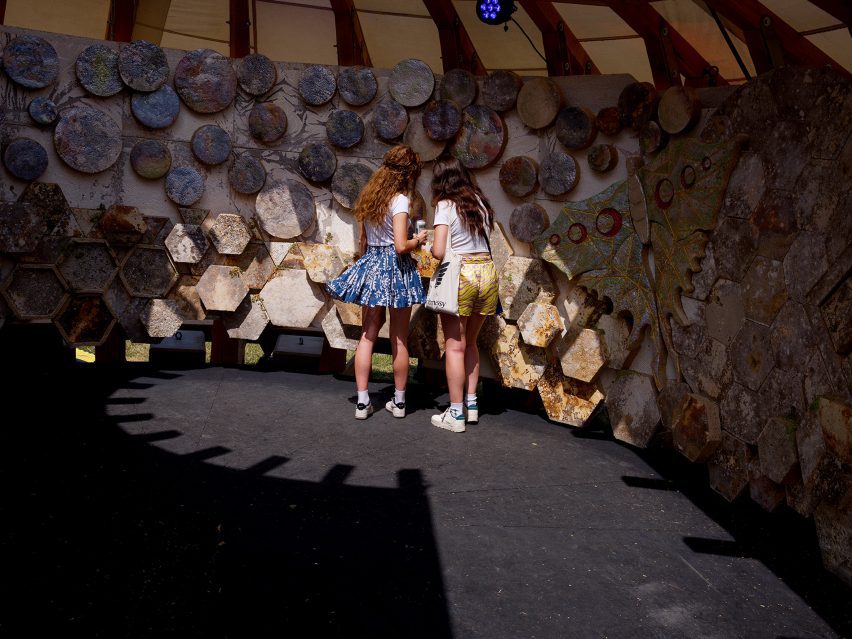
Carroll, who has worked in the industry for two decades and was responsible for Glastonbury’s own Lonely Hearts Club stage, set out to explore whether mycelium could offer a viable replacement for the fossil plastic, which cannot be processed in traditional recycling streams.
“I have seen the impact of what we do,” he told Dezeen. “The festival industry and the theatre side is a lot more resourceful – mainly because of finances – and they do tend to try and make sure that materials are upcycled.”
“But eventually, they end up in landfill or incinerated. And the film industry, unfortunately, is notoriously bad for it.”
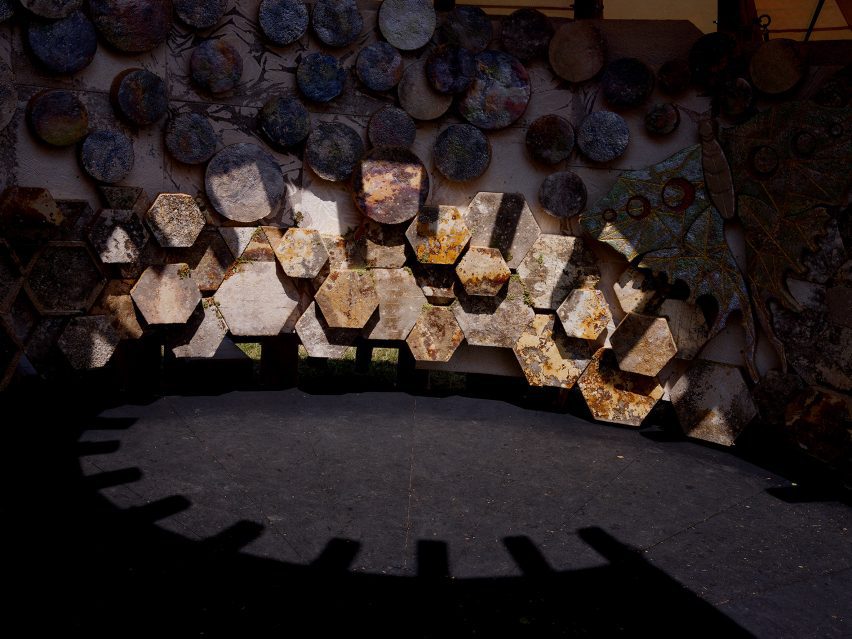
For the Hayes Pavilion, Carroll worked with a group of material researchers and set designers from across music, film and TV to push mycelium to its creative limits.
“We tried all sorts of different approaches based around the way that we currently approach the use of polystyrene,” he said.
That meant cutting, sanding and glueing the panels together using a gelatin-based adhesive to create an undulating three-dimensional surface and colouring it using a seaweed-based bioplastic coating by industrial designer Leksi Kostur.
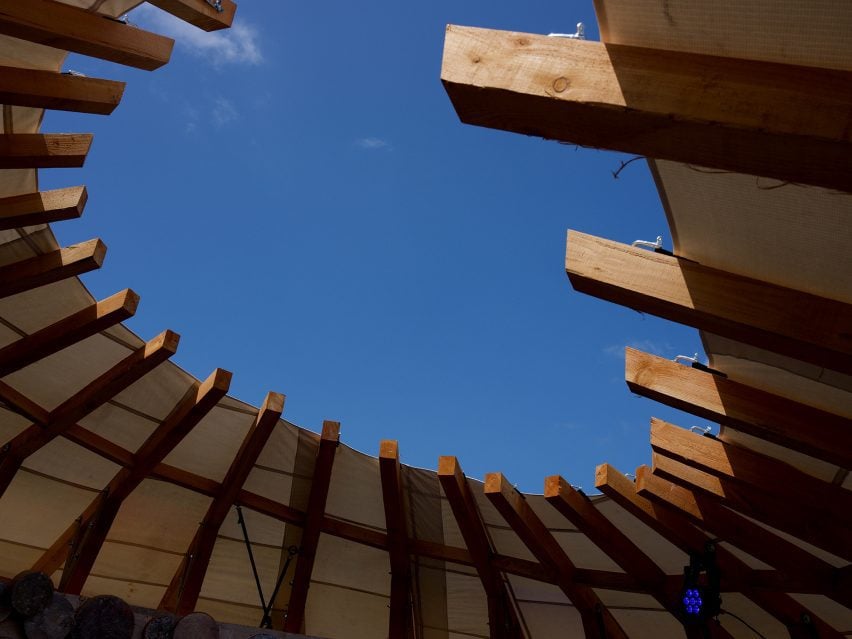
With the aim of keeping the pavilion’s footprint as low as possible, Carroll used various reclaimed materials in its construction.
The exposed timber framing system was made using salvaged wood from a 200-year-old Douglas fir that was upended in Wales during Storm Arwen, while the roof is made using repurposed tents from a company that rents festival marquees.
To ensure stability, industrial timber was used to form the decking supports holding up the pavilion’s raised, oriented strand board (OSB) floors, which protrude out beyond the footprint of the structure to act as a bench where festivalgoers can perch.
“Mycelium provides a communal network to a forest and I wanted to try and bring that idea into the design in terms of giving people a place to sit and talk and engage with the project,” Carroll explained.
Connected via steel bolts and mounting plates, the wooden structure can be entirely demounted and flat-packed so it can be reused for future editions of the festival.
Carroll plans to return the Hayes Pavilion to Glastonbury every year as a vehicle for exploring new green technologies and approaches that are promising to revolutionise the industry.
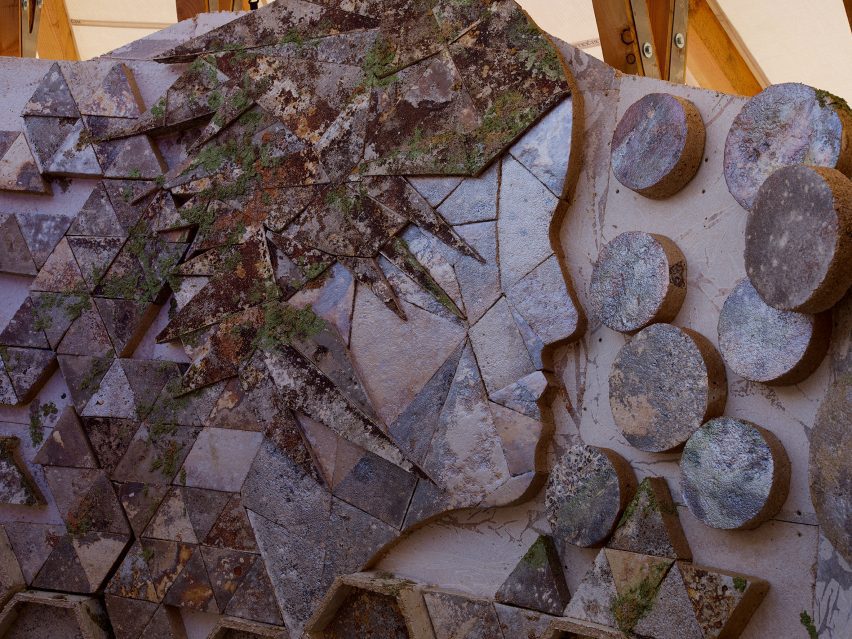
The mycelium panels would be retired after the inaugural edition to make space for other innovations. But Carroll claims that, unlike polystyrene, the panels can be composted once they are no longer needed, even with their bioplastic coating.
To verify these claims and assess the overall impact of the project, the designer enlisted sustainability consultant Pauline Bourdon to complete a whole carbon assessment of the structure.
“A lot of the time when we do big builds and things like this, time is an awful pressure and that then means that we have to make sacrificial choices,” Carroll explained.
“We are trying more and more to understand what the impacts of those are, whether that be material choices or staffing choices.”
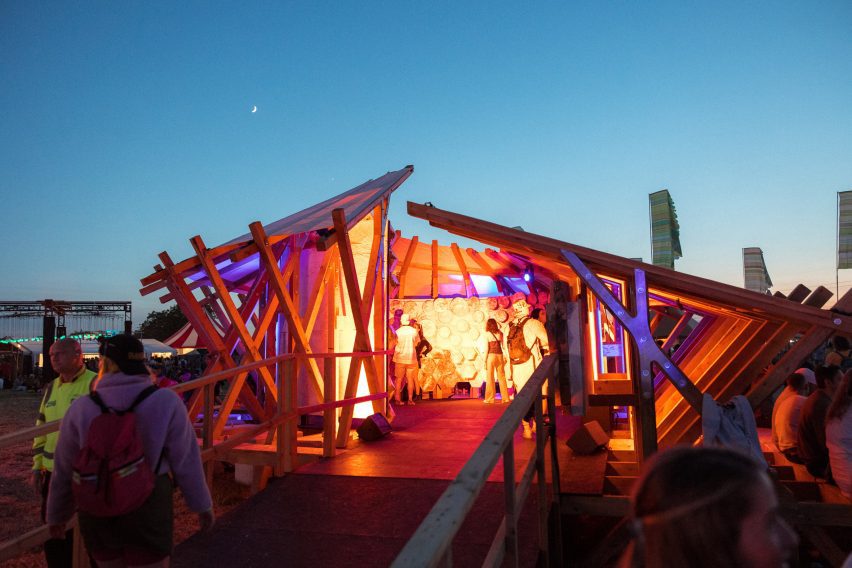
Although Biohm’s mycelium insulation boards are close to receiving regulatory approval, Carroll says that more material development will be necessary to adapt them for use in set design.
This is largely down to the material inconsistencies that are revealed when the ready-made panels are cut and sanded to create more intricate shapes.
“I had originally come up with the concept of quite a different design in terms of its styling and I realised very quickly that we’re not quite where we need to be,” he said.
“We are at very early stages and it’s given us the ability to now feedback and to continue developing a product that is more suitable.”
Glastonbury is also working to reduce its environmental footprint in other ways.
This year, the festival will be entirely powered by renewable energy and renewable fuels, while the sale of disposable vapes will be banned in an extension of last year’s ban on single-use plastic bottles.
Reversible pavilions that are designed for disassembly have become increasingly popular among architects and designers in recent years as the industry grapples with the environmental implications of creating temporary installations.
Among them is Vestre’s stand from the 2020 Stockholm Furniture & Light Fair, which was repurposed to form an installation at Milan design week the following year.




